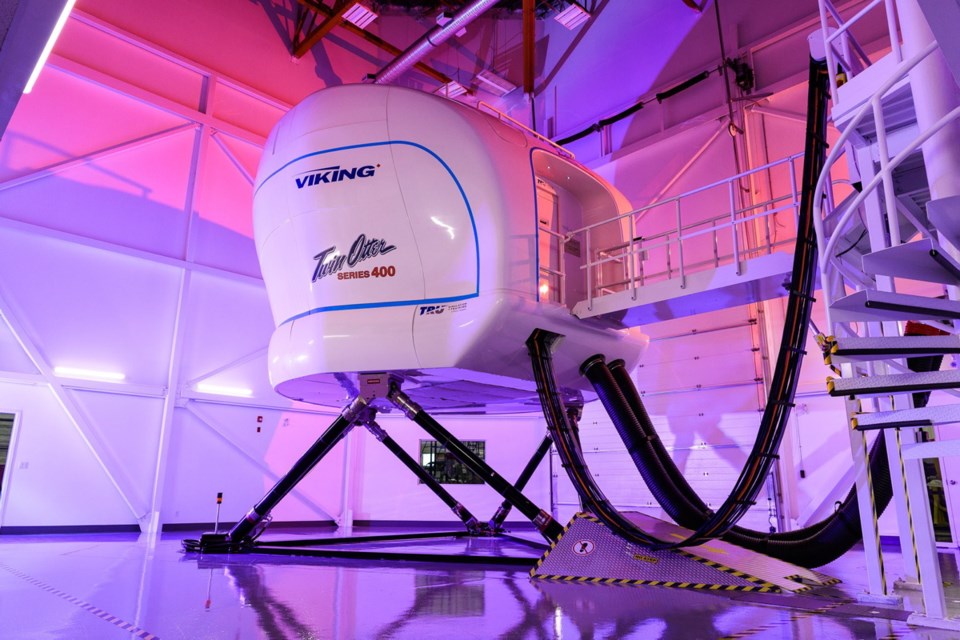Four years in the making, Viking Air has a new arrow in its quiver after the federal government signed off on the company’s Twin Otter flight simulator.
The “Level D” simulator, an exact representation of the Twin Otter Series 400 aircraft in terms of cockpit, avionics systems and flight behaviour, has been validated by Transport Canada as a true digital simulation of the characteristics of the aircraft.
The simulator is a major piece in the Viking puzzle as both a customer-service and marketing tool, said Michael Coughlin, CEO of Pacific Sky Aviation, Viking’s sister company that offers flight training on the Twin Otter.
“This is very much linked to the Viking strategy to continue to deliver aircraft across the world,” he said, noting it was the sales and marketing side of things that asked if the company should get a simulator when he joined eight years ago. “The marketing people said we need a simulator to help us sell airplanes and to make sure clients have the top level of training available to them.
“This means we can now start to offer certified training courses to clients around the world for initial training on the Twin Otter and recurrent training to those who come once a year. It means increased proficiency on emergency or dangerous situations and refinement of their procedures.
The simulator is located at Viking’s facility in Calgary.
In 2015, sod was turned at Viking’s headquarters in Victoria for a training centre that would house the simulator, but those plans were shelved in favour of Calgary. “We realized we had real estate already in Calgary and the production hangar had space for us in Calgary,” said Coughlin. “It was not an easy decision.”
But Coughlin said there is an advantage to having the simulator in the Alberta city, as clients can train and see their aircraft being produced. “It was a strategic decision to co-locate with the production line.”
The simulator is the world's first Twin Otter training centre that offers a flight simulator to train pilots to take off and land on water. It also allows instructors to program training events from any airport or GPS location, which the company believes is valuable for clients that operate from remote locations or conduct special operations unique to the Twin Otter.
Coughlin noted it is the only way to safely recreate emergency situations, allowing pilots to practice emergency procedures without exposing personnel to greater risk. It also lowers training costs as the simulator saves money and wear on planes.
Since Viking brought the Twin Otter back into production in 2007 -- the first was delivered in 2010 -- the company has sold and delivered aircraft to 29 countries.



